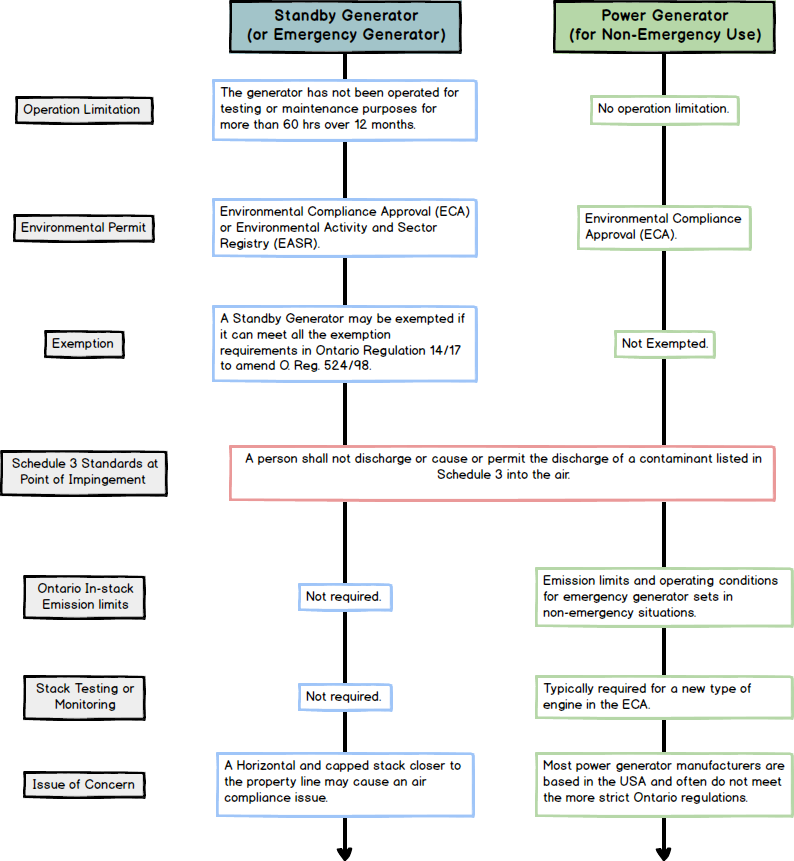The United States Environmental Protection Agency (EPA) released new versions (22112) of the AERMOD dispersion model and the AERMET preprocessor on June 27, 2022. The EPA invited industry and consultants to join the 2022 Virtual EPA Regional/State/Local Dispersion Modelers' Workshop to introduce the latest updates. This blog provides information on the background, release updates, future development plan and potential impact on Ontario’s regulatory dispersion model versions.
Background
In 2005, the American Meteorological Society/Environmental Protection Agency Regulatory Model (AERMOD) was promulgated as the EPA’s preferred near-field dispersion model for regulatory applications, replacing the Industrial Source Complex (ISC) model. There were a variety of regulatory formulation and related implementation updates to the AERMOD Modeling System in 2017. AERMOD was designed to accept more robust meteorological data, including multi-level profiles of wind, temperature, and turbulence to simulate the atmospheric boundary layer more accurately.
In accordance with the Ontario Regulation 419/05: Air Pollution – Local Air Quality (“the Regulation”) and Ontario Guideline A-11, facilities may only choose between SCREEN3 and AERMOD to assess compliance with the air standards in Schedule 3. Use of SCREEN3 is considered to represent a conservative Tier 1 screening type of modelling assessment while the use of AERMOD represents a more comprehensive approach and is categorized as either a Tier 2 or Tier 3 type of assessment. As noted in the Regulation, the regulatory version of AERMOD model may be amended from time to time. This means that there is a specific version of each of these models that is considered to be an “approved dispersion model.” Currently, the Ontario Ministry of the Environment, Conservation and Parks (MECP) adopts the 2019 AERMOD version 19191 and AERMET version 19191. MECP’s next window to provide pre-notification of updates to the Ontario regulatory AERMOD version is October 1, 2022.
AERMOD Version 22112 Updates
AERMOD Version 22112 updates include code maintenance, general bug fixes for tall stacks, buoyline sources, and the urban dispersion option. The new “experimental” ALPHA options include NO2 conversion methods, low wind handling, “sidewash” point source (developed by Cornell University),and platform downwash for offshore sources. Other model updates in a BETA peer review phase include R-line for refined transportation projects and the non-regulatory Generic Reaction Set Method (GRSM) for NO2 conversion, which are potentially ready for consideration as regulatory options. AERMET version 21112 is re-configured to eliminate stage 2 (merge stage), which simplify the process to generate the AERMOD ready met data.
Future Development Plan
Model formulation updates to the AERMOD Modeling System last occurred in 2017 when EPA finalized updates to the Guideline on Air Quality Models. EPA is planning to propose an update to the Guideline in 2023. The formulation updates are developed and implemented through model development, model evaluation and model review & application. The current improvement priorities for the regulatory release include:
Overwater Modeling–Refine / evaluate the platform downwash algorithm and add shoreline fumigation capability to AERMOD
NO2 Conversion –Testing of GRSM and TTRM/TTRM2 as the more advanced conversion options
Mobile Source Modeling / RLINE–Push from BETA to regulatory, improve treatment of terrain, and edge effects within the barrier algorithm
Low Wind –Evaluate current low wind options against field dataset
Urban meteorology –Improve inputs and processing for the URBAN option
Potential Impact on Ontario Regulatory Version
ORTECH is of the opinion that the changes in the version 22112 are minor and therefore the likelihood for Ontario MECP to adopt this version is low. This combined with US EPA’s proposed 2023 updates, including formula updates, would potentially represent a major upgrade to the AERMOD model. If the 2023 improvement priorities for regulatory updates are completed, MECP may consider adopting the 2023 updated versions. Under current MECP policy a six-month pre-notification period will be provided, prior to officially adopting a new regulatory version of AERMOD.
ORTECH has been conducting air quality assessments for over 40 years and continues to monitor developments in dispersion modelling and how these may impact our industrial and other clients. Please contact Leo Sun at lsun@ortech.ca for more information.






